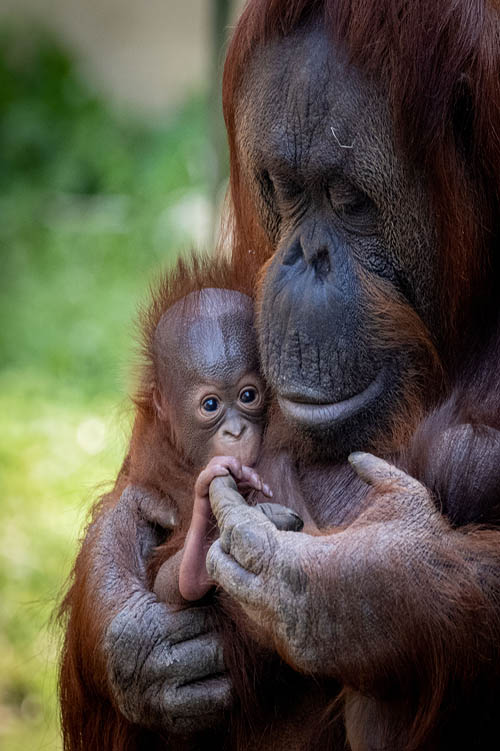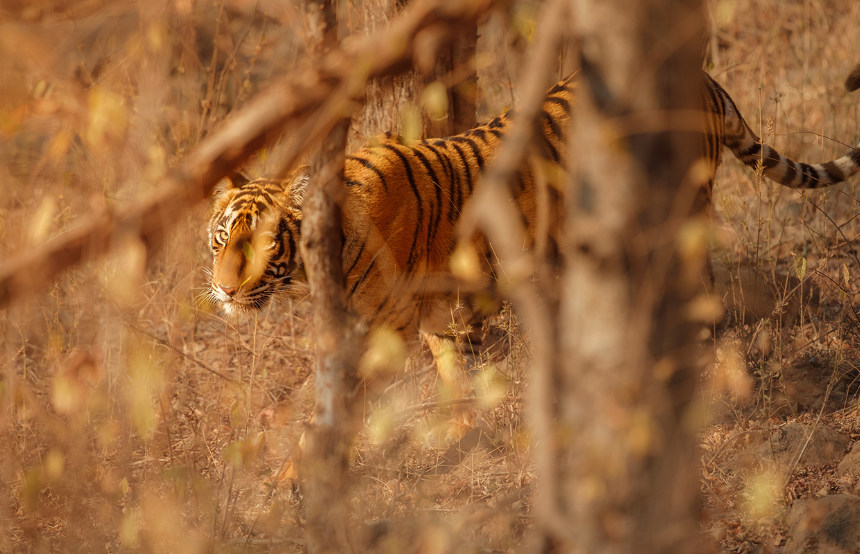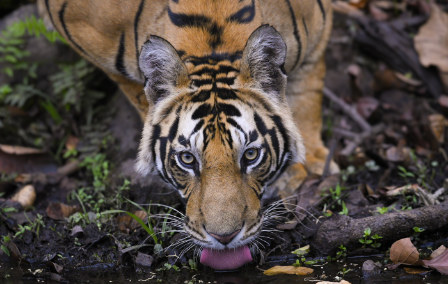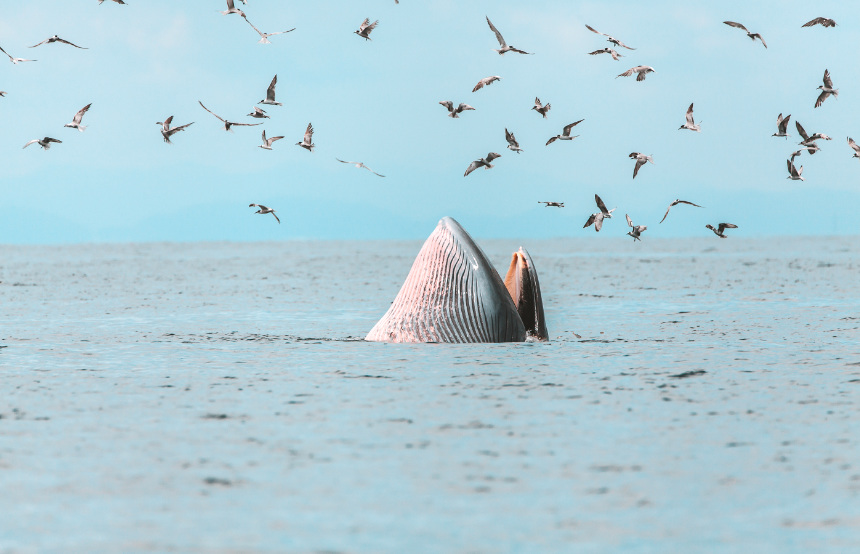Published 7th Feb. 2024
Reading time
Orangutans aren’t your run-of-the-mill monkey. Tenaciously resourceful, dexterous and agile, these crimson-coloured great apes have more in common with us humans than you think. Yet, despite their intelligence (they’ve been observed making gloves and umbrellas from leaves!), their populations have been in decline since the late 20th century as a result of deforestation and illegal hunting. Our Foundation has long been fighting the good orangutan fight, supporting NGOs in Indonesia to replant their forests (50% of which have been lost in the past 40 years) and aid social programmes that contribute to mammal protection. So, the least we can do is shed light on these wonderful creatures with some cool orangutan facts. Read on to find out more…
The Indigenous Dayak people of Borneo will tell you an old legend that the orangutan was originally a human who pretended not to be able to speak and climbed up the trees to escape having to work. Everyone else will tell you the name originated from two Malay and Indonesian words: 'orang', which means human, and 'hutan', meaning forest. However it came to be, the ‘humans of the forest’ is a particularly apt name for these rainforest-dwelling apes. Usually found in low-lying peat forests, they primarily live above ground and in the forest canopy, making them the largest arboreal mammals. But it’s rare you’ll ever see more than one together. These semi-solitary monkeys prefer life alone; so much so that as they move through the forest, they make long rumbling, howling calls to ensure they stay out of each other's way. And for a bonus fact about orangutans: this long call can be heard over 1.2 miles away.
The only place you’ll find orangutans in the wild are on the Indonesian islands of Sumatra, and in Borneo. Head to the Kinabatangan River in Malaysian Borneo, where it’s estimated over 1,100 orangutans live, and you’re pretty much guaranteed a sighting. Hop on a three-day river cruise down the marsh-lined river, and you may even spot endangered pygmy elephants and proboscis monkeys too. In Sumatra, it’s all about Bukit Lawang, a once-soft-release site for rescued orangutans. While many of the monkeys eventually dispersed, a small number chose to stay semi-wild (living free but still seeking food from humans). Head out on a trek around the site’s grounds and you’re bound to spot a few – maybe even the Tapanuli orangutan, which was only discovered on Sumatra a couple of years ago.
Biologists believed there to be only two orangutan species; the Sumatran Pongo abelii and the Bornean Pongo pygmaeus. However, in 2017, the Tapanuli orangutan (known as Pongo tapanuliensis) was discovered in Sumatra. According to the International Union for Conservation of Nature (IUCN), all three are critically endangered. Recent estimates put wild Bornean orangutan populations between 50,000 and 100,000. In Sumatra, Pongo abelii populations are believed to be less than 14,000, while only 800 Tapanuli orangutans are estimated to live in the wild. One of the most sobering orangutan facts for why this is, is because over 60 percent of the orangutan’s natural habitats in both countries have been destroyed over the last four decades.

Another reason for the orangutan’s critical endangerment status may be due to their reproduction cycle. These great orange apes have the longest birth interval of any land mammal in the world. Females usually reproduce once every six to eight years (only raising two or three babies in their lifetime), and like humans, typically have only one offspring at a time. Additionally, orangutan infancy is longer than most other primates’. Infants are dependent on their mothers for up to eight years after birth to acquire the necessary skills to survive on their own.
One of the best Orangutan facts of them all is how closely related we humans and orangutans are. 97% of their DNA is the same as ours, and we share at least 28 of the same unique physical characteristics. These tell-tale features include thickly enamelled molar teeth with flat surfaces, similarly shaped shoulder blades, hair lines/partings and the ability to laugh. In fact, according to a Marie Curie Fellow at the University of St Andrews, ‘orangutans exemplify how our ancestors probably communicated beyond the here-and-now about the past, and possibly the future, even before they had uttered their first word’. Pretty cool, huh?
Written by Naomi Pike
Practical advice and inspiration for your next trip

Searching for the best safaris in India? We’ve got you covered. Whether you’re keen to track tigers in Madhya Pradesh, admire Asiatic lions in Gujarat or photograph forest eagle owls in Kerala, your India holiday awaits. While Bengal tigers steal the limelight in Bandhavgarh National Park, don’t forget about the shaggy sloth bears (though they’re not as cuddly as they look). Feeling up for the adventure?
15th September 2025 - India Safari & Wildlife

With their sleek, tangerine-tinged coats, piercing eyes and commanding presence, nothing beats the thrill of seeing a tiger in the wild. And where better than in India, home to the largest population on Earth? But when it comes to the best time to see tigers in India, it all depends on what you want from your trip. Whether you’d rather vivid green landscapes or crowd-free safaris, we’ve got the insider intel on when to see India’s famous big cats.
23rd June 2025 - India Safari & Wildlife

Where are the best places for whale watching? We’re glad you asked. From the picturesque Icelandic town of Husavik to the coastal haven of Mirissa in Sri Lanka, there are plenty of destinations to marvel at these majestic creatures. Picture this: the air is still and all you can hear is the creaking of the catamaran and the odd, excited whisper. You scan the horizon, desperate to spot the tip of a fluke or a distant plume of whale breath.
16th June 2025 - Safari & Wildlife

Our team of destination experts will get to know you and your unique requirements for your holiday

We work with you to build an ultra-personalised holiday itinerary with your choice of accommodation, experiences and activities

All of our holidays include little extras designed to make a big difference to your trip, from fast-tracking you through airport check-in and security to our network of local Concierges